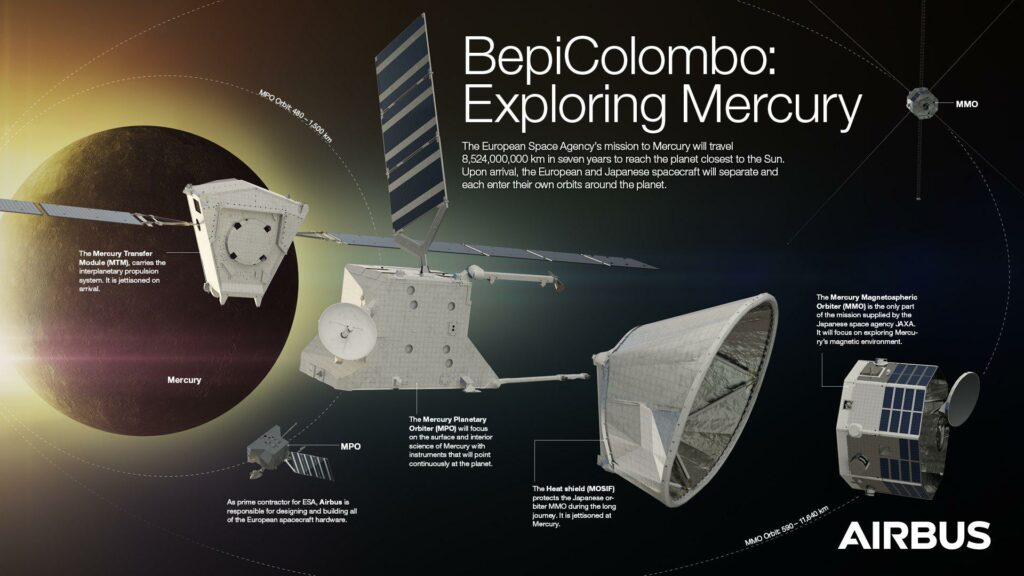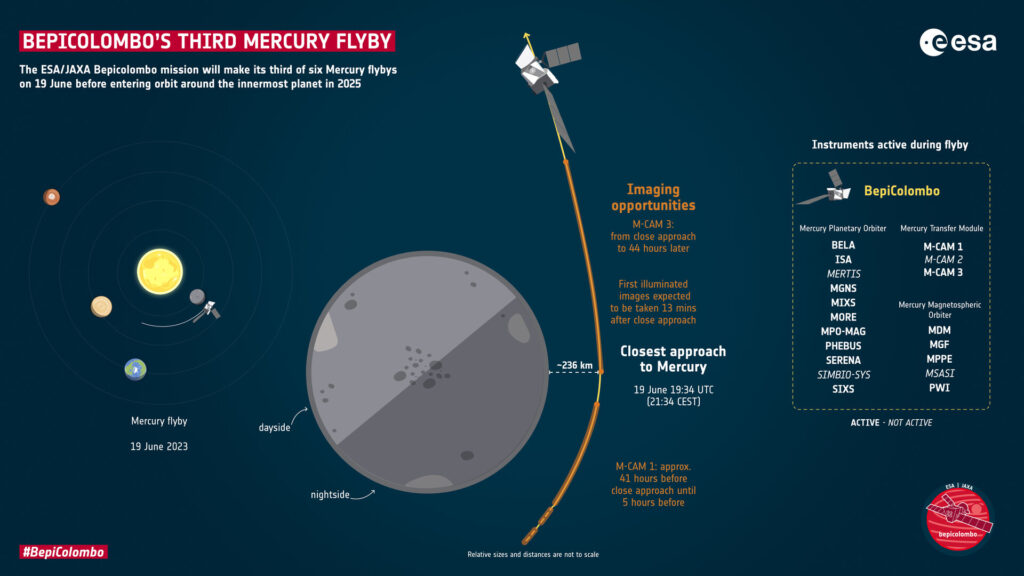On June 19, the European-Japanese BepiColombo mission will make a close flyby of Mercury. The spacecraft will pass at a distance of only 236 km from the surface of the planet.
Difficulties of the flight to Mercury
The BepiColombo spacecraft consists of European and Japanese probes. After entering the orbit around Mercury, they will separate, after which they will begin to carry out their scientific programs. The European spacecraft will study the surface and internal structure of the planet, while the Japanese probe will focus on studying its magnetosphere.

Despite the fact that BepiColombo was launched back in 2018, it would be able to enter a permanent orbit around Mercury only in 2025. Such a long flight period is explained by the gravity of the Sun. It attracts any spacecraft launched to Mercury, significantly increasing its orbital velocity. And in order to enter orbit around the first planet, the excess speed must be somehow extinguished. Since this requires much more fuel than the spacecraft can take with it, the mission specialists decided to use the gravity of the planets to slow it down.
In total, the BepiColombo flight plan provides for nine gravity maneuvers. Since its launch, the spacecraft has already completed five of them: one in the vicinity of Earth, two at Venus and two more at Mercury. On June 19, it will take advantage of the gravity of the first planet for the third time.
How will the Mercury flyby proceed
In preparation for the upcoming Mercury flyby, BepiColombo made a number of course corrections using its propulsion system. They became the largest maneuvers carried out by the vehicle during its entire mission.

Now BepiColombo is moving at a speed of 3.6 km/s relative to Mercury (this is almost twice less than its speed before its first visit to the planet). According to the calculations of engineers, during the upcoming approach, the gravity of the planet will first accelerate the spacecraft to 5.4 km/s, and then “slow down” it. After completing the maneuver, the speed of the spacecraft will decrease to 2.8 km/s, and its flight path will change by 2.6 degrees.
BepiColombo will approach Mercury from the night side. 13 minutes after passing the point of minimum approach (it is located at a distance of 236 km from the planet), the illuminated part of Mercury will fall into the field of view of its selfie cameras, which will allow it to take pictures of the surface. They are expected to be published on June 20.
In addition, mission specialists are going to use the flyby to calibrate BepiColombo’s scientific instruments to carry out a number of measurements. In particular, they want to obtain data on the characteristics of the interplanetary medium in the vicinity of Mercury, as well as to study its magnetic field.
According to https://www.esa.int
Follow us on Twitter to get the most interesting space news in time
https://twitter.com/ust_magazine

